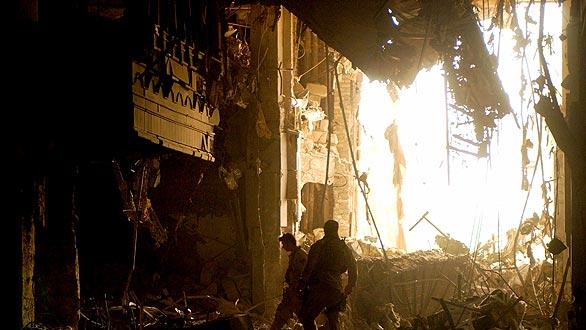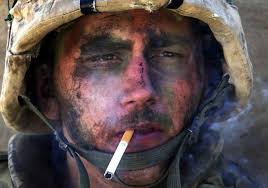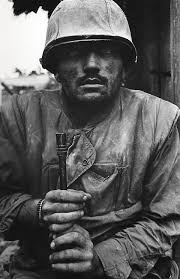I feel as if we look down upon some of the embedded military photography because we think that these images are censored and chosen specifically by the U.S. to represent the war in the way they want Americans to see it. Dane Jensen curates an exhibit to represent the war through the lenses of these embedded military photographers. His vision is to create a dialog and awareness of what is going on in Iraq and Afghanistan to raise money for the soldiers who are injured coming home. What he discovered was that many of these photographers were incredibly talented and had much to offer for his fine arts show.

Sgt. Jacob N Bailey, Sleeping Child, Tal Afar Iraq, 2007
In the article for Newsweek, Exhibit: War Photos of Iraq and Afghanistan, Jenny Hontz interviews Dane Jensen about his show at The Reform Gallery in Los Angeles. Jensen spoke about how he chose much of the images that he presented. He said that he wanted to look at the backstory that was going on in light of the war such as, pollution and child labor. When we think of war, we think of combat, and that is what we want to see. The truth is there are many other issues at hand due to the effects of war. This is what the exhibit Bringing the War Home was designed to do as well. Since we look for gore and explosions, we are also left feeling as if we are robbed from the truth and that the U.S. Military is hiding something from us by embedding their photographers.

Staff Sgt. Russell Klika, Cemetary, Kirkuk Iraq, 2006
The fact is that they are not going to show dead American soldiers. This is for us to consider on our own. We are shown glimpses of the war, and we have to expect that there is also bloodshed taking place behind the scenes. They are not going to make this public because they have no reason to. Dane Jensen did a good job of expressing to us the level of professionalism that goes into the work of these embedded photographers. They are there to capture the moments that they feel best to represent the war.

Staff Sgt. Russell Klika, Brick Factory, Baladruiz Iraq, 2005
Jensen talks briefly about the first all-female combat photography team. One of these women, Cherie Thurlby, is quite accomplished and has taken photos that many of us would recognize. She took a picture of Saddam’s palace after the Americans had bombed it. It was also her persistence that got the soldiers to allow her to enter the building just to take the photo. Other women have also been injured and could have easily died on site. Stacy Pearsall has been hit in the neck two separate occasions by an IED, luckily surviving both. There is a lot to war photography then is laid out to us through mass media. There is also a lot of stories to be told, so the exhibit by Dan Jensen says a lot for the field.

Cherie Thurlby, Presidential Palace, Saddam Hussein, Iraq







